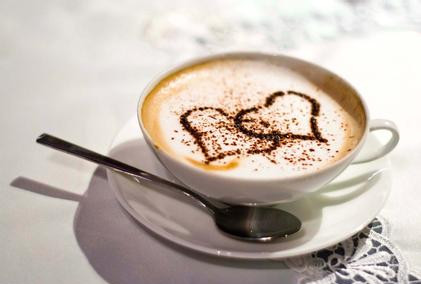Brewing method of coffee brewing method of Turkish coffee

There is no saying which is the best way to brew coffee; everyone has a brewing method that they think is the best. Coffee is already a part of our daily lives, so it has to fit our lifestyle and meet the economic benefits of everyone. Brewing coffee is not only a ritual, but also a practical aspect of our lives. Coffee, unlike tea or cocoa, can be distinguished by individual brewing methods. But in any case, the basic principles are the same, such as extracting the essential oils and caffeine from ground coffee beans with hot water; these principles are what make coffee wonderful in flavor and taste. In short, coffee is brewed.
How to brew Arabic or Turkish coffee
Although coffee beans spread from Arabia to the world, the Arabic method of brewing coffee is less famous. The method of brewing arabic coffee is basically quite different from other methods of brewing coffee: the traditional arabic method is to brew coffee three times. Boiling coffee is easy to boil off the aromas, but it is the most romantic way to make strong coffee. Arabica is always brewed in the same place, in a small copper pot with a long handle. Two tablespoons of fine ground coffee, one tablespoon of sugar, and one cup of water are mixed and boiled. Wait until it's cold and then heat it up, back and forth three times in total; then start pouring it out and drinking it. It's flavored with cardamom. Filtration Today, the trickle-down or filtration method is probably the most used method. Place the fine ground coffee on a suitable paper or reusable conical dish and pour boiling water over it. For better quality, wet the ground coffee with a small amount of water to speed up the release of caffeine. The brewed coffee is poured into a regular cup or mug and can be drunk. The ground coffee is still stored in the cone. Electronic machines are now used for this brewing method because they automatically perform all brewing procedures, including heating the water, and can brew coffee of better or more stable quality than pure manual brewing. The countries most commonly used are Germany and the United States.
piston method
The piston-type method, some say invented in 1933, extracts the most flavor from ground coffee beans. The pot should be heated in advance, and then the coarse ground coffee is added to the bottom of the pot, and then hot water is added. Then stir and boil for about three to five minutes. When the piston has not completely lost its strength, separate the ground coffee from the coffee beverage. This method is only slightly more convenient than the filter method, but it is also one of the top two methods that are increasingly used to brew fresh coffee.
stewing
Stewing is arguably the easiest way to brew coffee. That is, just mix coarsely ground coffee with hot water. It is similar to the piston-type coffee brewing method, except that it does not use a piston-type brewing pot that separates ground coffee from coffee beverage. Stewing has become more and more accepted because it is always a good way to serve people without any flaws. ESPRESSO AND CAPPUCCINO This Italian coffee brewing method is now the fastest growing and most accepted method. Other ways of brewing coffee are always natural and economical, and you can make a satisfying cup of coffee. But if you want to drink espresso, I'm afraid it's not that easy. Espresso's machines force hot water through premium, compressed coffee to extract it. A good Espresso machine is expensive, because in order to extract the most complete aroma of coffee, it must use a considerable high pressure, so the cost of the machine is expensive. If you want to classify Espresso machines, the most important thing is not to over-extract coffee, which means that the machine itself has to be powered down quickly, otherwise it is not good. If the color of the coffee flowing out is a light brown liquid, it is the most perfect. This liquid is the "essence of coffee," which exists only on the surface of the underlying black coffee. The "essence of coffee" disappears within minutes after the coffee is brewed, and it tells you all about the quality of Espresso coffee in the few minutes left. Too weak, too strong or not strong enough indicates that the quality of such Espresso is inferior. For some people Espresso may have become their religion. The gap between a really good Espresso and a not-so-good Espresso is huge. Each of us spends a lot of money on seeking the best qualities to improve our standard of living. Cappuccino can be said to be an Espresso based product; it is coffee brewed by adding Espresso coffee to a thick milk foam brewed by a long ladle. Good espresso in Cappuccino doesn't look as pronounced as frothy milk, however coffee quality is still an important factor. As far as milk is concerned, it is best to use semi-defatted milk, which should be added to a kettle with holes through which steam can be ejected. Do not open the air pressure control valve if the milk surface is not already higher than the steam injection hole. Once the steam is flowing under the milk, shake the kettle quickly, otherwise the milk will easily spoil. The purpose of heating milk is to make it easier to cream it. When pouring milk into a glass, be sure to warm the glass first, otherwise the foam will disappear. This is a basic skill. So they're in Espresso machines, usually stored upside down. The frothed and steamed milk is poured over the coffee in the cup and carefully poured as if it were wrapped. Even the last drop of milk was poured. After that, we can have a perfect Cappuccino.
Napoleonic mocha
In Italy, there is not a family without mocha pots of all sizes, and no matter what you think of coffee, Italians have a taste that is unmatched. This combination of Espresso and filter coffee maker features a wonderful design with a double boiler. It forces boiling water into the lower pot, through a pipe, and into the fine ground coffee. When skillfully held up, you can satisfy coffee cravings and produce enough "espresso" coffee in just one minute.
Filter coffee pot brewing
The filter coffee pot method was a fairly civilized and progressive method of brewing coffee in the American West; after the recent coffee "revolution," it became naturally the most widely accepted method in the United States, and almost every household had a standard filter coffee pot. The coffee ground brewed in this filter coffee pot is usually coarse and heated directly in cold water, so when the water boils, it will produce water vapor and form bubbles into the top part of the equipment. When you listen carefully to the coffee liquid produced by the bubbles, like the sound of flowing water, it is really a kind of relaxing high-level enjoyment; coupled with the coffee aroma permeated by the most volatile coffee flavor, filling the whole house, that feeling is really great. And honestly, there probably isn't a worse way to make coffee than this one.
Dissolution, or instant coffee.
Instant coffee was first invented in 1901 by Satori Kato, a Japanese-American chemist in Chicago. It wasn't until Nestlé began marketing it commercially in 1938 that it became widely accepted. Also because in a short period of time, the quality of instant coffee has also improved dramatically; so everyone can have a good cup of coffee at any time. Instant coffee has many advantages over freshly brewed coffee, especially in terms of simplicity and convenience. It's relatively fresh, and it doesn't spoil the flavor, and although it's hard to try, it always beckons as fast, cheap, and clean. Instant coffee, like other coffees, is made from ground coffee. First it prepares the anhydrous coffee extract, either by heat treatment or freezing; then it produces soluble powder fines. After dehydration, the essence of coffee may also disappear; however, this missing essence will be absorbed by the next wave of coffee to be processed. There is a type of brewed coffee on the market that is generating interest and growing rapidly called flavored coffee. Today, there are more than 100 different coffee flavors on the market. While coffee connoisseurs are sniffing at coffee they consider sacred, it is time for flavored coffee laced with chocolate or cinnamon. Coffee alone is fine; it just shows great energy when blended with other products. Actually, flavored coffee is an old trick. In the Middle East, coffee is traditionally flavored with cardamom; in Mexico, cinnamon has been added for years. The reason why flavored coffee continues to grow proves one thing, that is, the versatility of coffee itself and its many advantages. Condiments are added directly to the coffee while it is roasted, and then sprayed with special flavors to preserve the protective oil during shipment. This method makes coffee ideal for drinking in summer because it can be refrigerated, such as canned iced coffee: pre-made frozen coffee with ice cubes or crushed ice. So far, milk is arguably the most widely blended condiment with coffee in the world. Although Arabica coffee does not add milk, pure coffee-ism people do not add cream, but for most people, coffee and milk is a perfect match!
McVeigh Follicular Roast Coffee
Mai Wei coffee is the easiest way to enjoy the purest coffee-instant coffee convenience, roasted coffee mellow delicious! Mai Wei coffee is follicular ground roast coffee, brewing simple, sanitary, and mellow delicious. Maiwei Coffee uses professional manual bean selection method to select the best coffee beans and roast them by carbon fire, infrared and other methods (about 70% of the coffee consumed in the world every year) and grind them into coffee powder (in order to meet the needs of different tastes, each box is equipped with one pack of creamer and sugar). In the process of roasting coffee drinking, everyone can add appropriate amount of creamer, sugar, wine, cream, ice cream, chocolate, etc. according to their own preferences, and find the enjoyment suitable for their own taste. 90% of the world's coffee products are roasted. Maiwei coffee dedicated "disposable roast coffee brewer" has applied for national patents; coffee beans are all professional hand-selected imported, domestic high-quality beans; professional roasting; fashion value orientation: brand visual elements put "It's my way!" This coffee culture value that can be tasted and slowly felt is interpreted into a rich taste like Chinese tea-coffee is definitely not just an instant, monotonous drink, nor is it just a drink with a lot of milk, sugar, ice and other coffee flavors.
Important Notice :
前街咖啡 FrontStreet Coffee has moved to new addredd:
FrontStreet Coffee Address: 315,Donghua East Road,GuangZhou
Tel:020 38364473
- Prev

8 knowledge of coffee that must be known
Many people like to drink it now because the caffeine in coffee is the most eye-catching of all the ingredients in coffee. The greatest bitterness in coffee flavor is caused by caffeine. Caffeine is a softer stimulant in coffee, which can improve the sensitivity, attention, metabolism, mental state and physical fitness of the human body.
- Next

The relationship between coffee and health the key to drinking coffee is not to drink too much coffee.
Coffee can refresh the mind and make the mind clear, and it helps to increase blood flow by dilating the arteries of the heart; it obviously has the effect of diuresis; it can relieve the symptoms of headaches; it can effectively help lose weight, help digestion, relax muscles, etc., coffee is said to have anti-cancer effects and can prevent stones. However, coffee may also cause osteoporosis in middle-aged and elderly women.
Related
- Beginners will see the "Coffee pull flower" guide!
- What is the difference between ice blog purified milk and ordinary milk coffee?
- Why is the Philippines the largest producer of crops in Liberia?
- For coffee extraction, should the fine powder be retained?
- How does extracted espresso fill pressed powder? How much strength does it take to press the powder?
- How to make jasmine cold extract coffee? Is the jasmine + latte good?
- Will this little toy really make the coffee taste better? How does Lily Drip affect coffee extraction?
- Will the action of slapping the filter cup also affect coffee extraction?
- What's the difference between powder-to-water ratio and powder-to-liquid ratio?
- What is the Ethiopian local species? What does it have to do with Heirloom native species?

